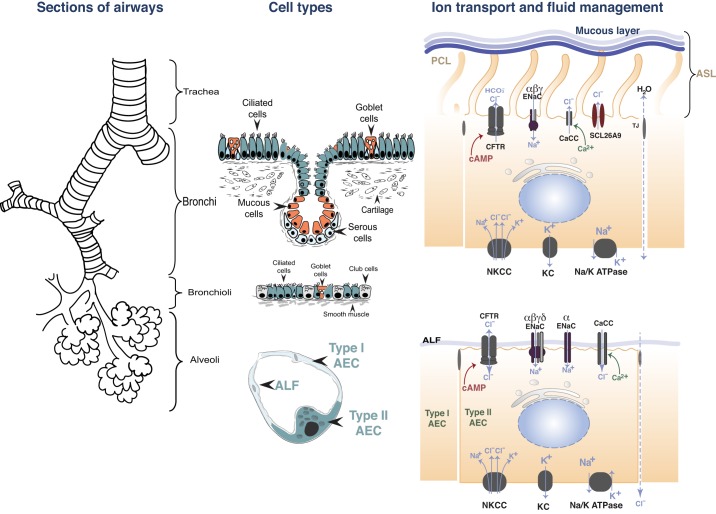Fig. 1.
The respiratory tract: segments of the airways, cell types, and ion transport in epithelial cells. Na+ ions enter the cytoplasm of ciliated airway cells and alveolar type I (ATI) and type II (ATII) cells, through channels, down an electrochemical gradient, created by the energy-consuming, ouabain-sensitive Na+/K+-ATPase located at the basolateral surface. Two different types of Na+ channels have been identified. Highly selective Na+ channels, consisting of at least 3 subunits (α, β, and γ), which are inhibited by micromolar concentrations of amiloride (epithelial Na channels, ENaC) and nonselective cation channels, consisting of the α-subunit. K+ ions exit the cells via basolateral K+ channels (KC). Ciliated cells secrete Cl− ions through cystic fibrosis transmembrane conductance regulator (CFTR), as well as Ca2+- activated Cl− channels (CaCC) and SCL26A9. Cl− ions enter the cells via the basolateral Na+/K+/2Cl− (NKCC) symporter, down an electrochemical gradient created by the Na+/K+-ATPase. In alveolar cells, Cl− transport across CFTR is likely bidirectional and depends on the concentration gradient. In ATII and ATI cells, Cl− enters cells through CFTR or crosses across the paracellular junctions to maintain electroneutrality. PCL, pericilary fluid; ASL, airway surface fluid; ALF, alveolar lining fluid; AEC, airway epithelial cell.

